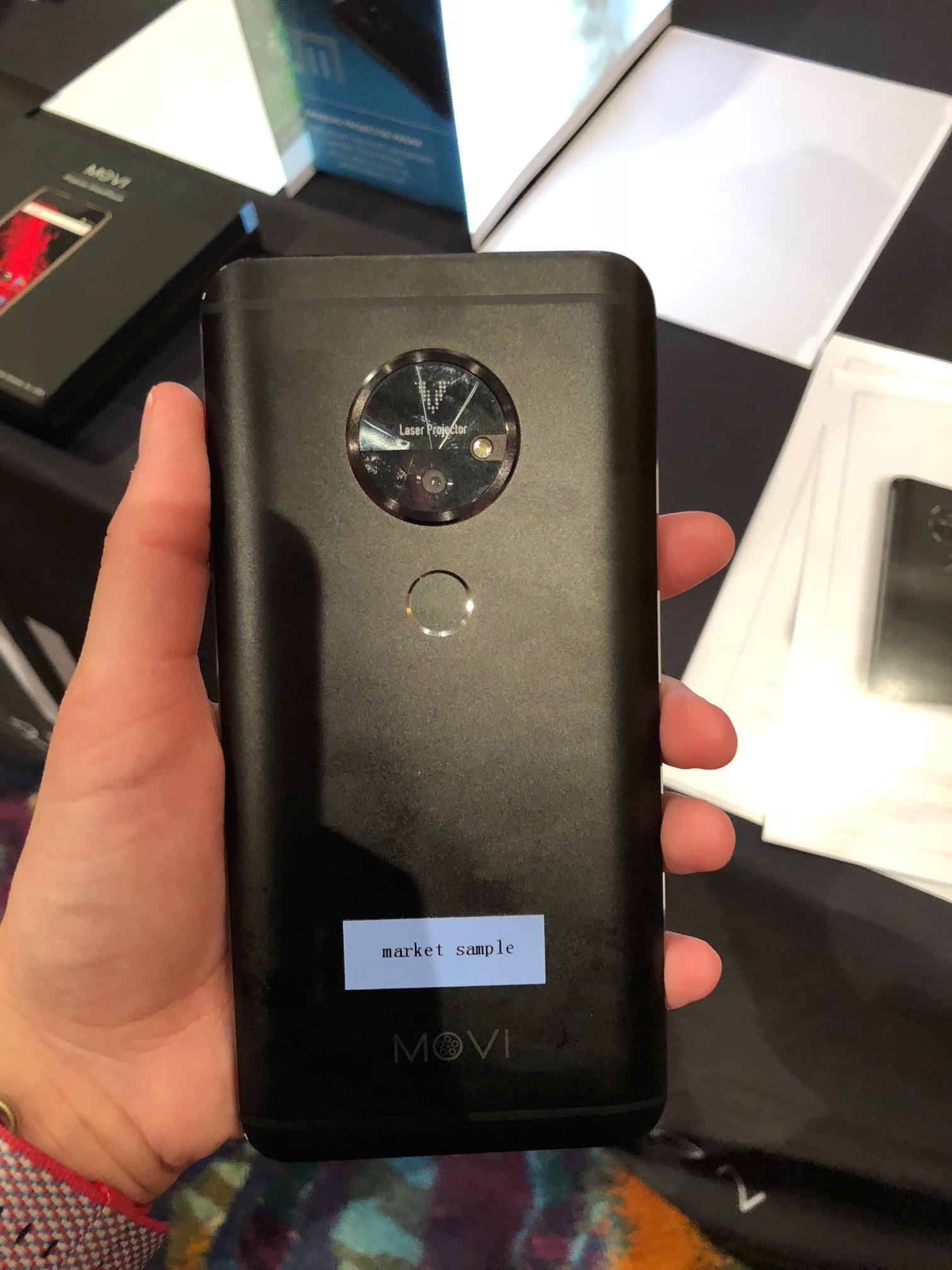
Considering more than half of all video viewing now happens on mobile devices, it’s probably accurate to say that smartphones have become many people’s go-to entertainment device. But there are certainly times when watching a lengthy video or television show on a pocket-sized screen isn’t ideal.
That’s where Movi comes in: It’s an Android smartphone with a built-in pico projector that can project 720p images up to 200 inches in size diagonally. It’s available now for $599 and is unlocked, so it should work with any carrier.
The idea isn’t entirely new — companies like Motorola sell smartphones that can connect to projector accessories, but those are often expensive. The Insta-Share Projector Moto Mod, which is designed to fit on certain phones in Motorola’s Moto Z line, costs $300. When you add that to the cost of the phone, which can range between $400 and $720 depending on the model, you can end up paying between $700 and around $1,000. From that perspective, the Movi looks like a bargain.

Surprisingly, the Movi’s integrated projector doesn’t add much extra bulk — the device feels almost like any other mid-range Android phone. There’s a 4,000 mAh battery inside the Movi, which should last for about four hours when the projector is turned on. The projected image automatically switches to landscape mode whenever the phone’s screen does, so you don’t have to switch the phone’s orientation. Turning on the projector is as simple as launching an app.

It was difficult to get a sense of exactly how sharp and crisp the picture quality was during my demonstration at CES 2018, since it’s meant to work best in dim conditions. But even when projecting on a small surface in the crowded and brightly lit showroom, the Movi’s picture quality certainly looked decent enough. I could easily imagine projecting Netflix on my ceiling before bed or a YouTube video on my apartment wall when friends are over.
The Movi’s relatively low price comes with a handful of compromises in the specs department. The Movi phone’s 5.5-inch FHD screen isn’t as sharp and vibrant as the high-tech OLED screens on premium smartphones like the Samsung Galaxy S8 or Apple iPhone X. And while the phone does have a 13-megapixel camera and 8-megapixel front camera — which on paper sound comparable to high-end phones — it doesn’t have dual camera capabilities like the latest and greatest devices (that means you shouldn’t expect to capture portrait-style shots that make the subject look sharp against the background.) There’s also a fingerprint sensor for unlocking your phone without typing in a passcode.
Regardless of how well the Movi phone works in practice, it’s refreshing to see a smartphone that stands out for clever and useful features rather than simply trying to compete with giants like Samsung and Apple. And even if you don’t wind up with a Movi, it could push those bigger smartphone makers to keep innovating with devices of their own.
More Must-Reads from TIME
- Cybersecurity Experts Are Sounding the Alarm on DOGE
- Meet the 2025 Women of the Year
- The Harsh Truth About Disability Inclusion
- Why Do More Young Adults Have Cancer?
- Colman Domingo Leads With Radical Love
- How to Get Better at Doing Things Alone
- Michelle Zauner Stares Down the Darkness
Contact us at letters@time.com